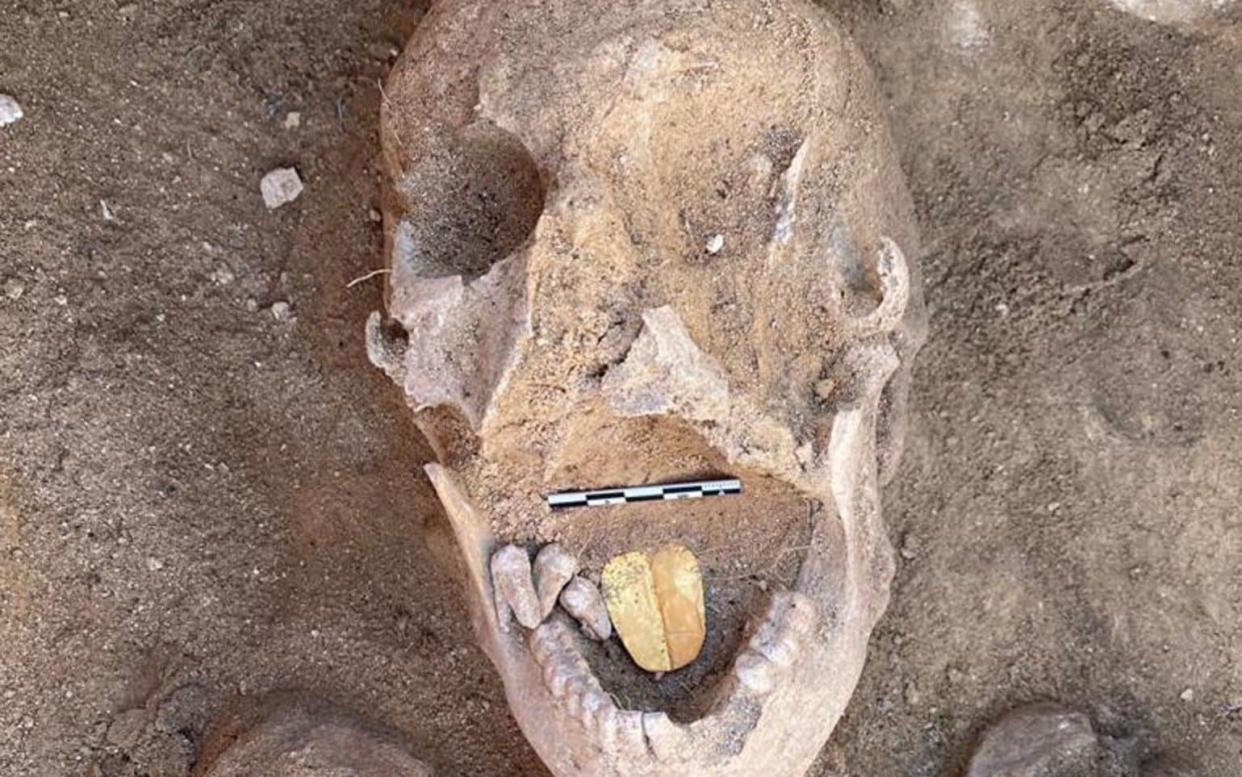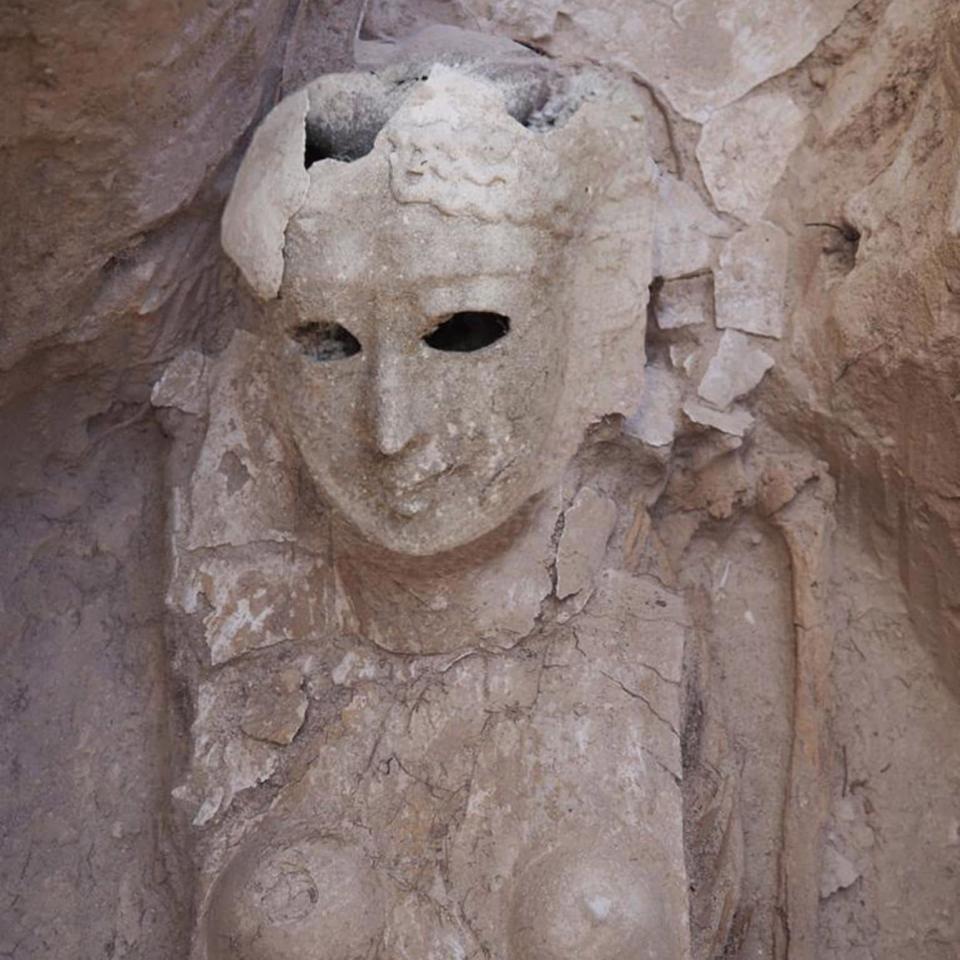Archaeologists unearth 2,000-year-old mummies with golden tongues in northern Egypt

Archaeologists in Egypt have unearthed more than a dozen 2,000-year-old mummies, including some with gold tongues in their mouths, according to the country’s Ministry of Tourism and Antiquities.
The Egyptian-Dominican team from the University of Santo Domingo in the Dominican Republic was working at the Taposiris Magna Temple in western Alexandria when it discovered the remains of 16 ancient Egyptians buried in rock tombs.
The mummies were poorly preserved and in a state of significant decomposition, but photographs released by the ministry showed a human skeleton with a clearly visible, tongue-shaped piece of gold placed in its jaw.
According to officials, the amulets “were placed in the mouth of the mummy in a special ritual to ensure their ability to speak in the afterlife before the Osirian court.” In Egyptian mythology, Osiris was the god of the afterlife, as well as fertility and agriculture.
Dr Kathleen Martinez, who headed the team, explained that of the 16 mummies, the two most important had preserved alongside them the remains of scrolls and parts of their cartonnage – a kind papyrus or linen-based papier-mache used to construct the intricate “face masks” that envelop the mummified bodies inside their sarcophagi.

The first of these bore “gilded decorations of the god Osiris … while the other mummy wears a crown decorated with horns and [a] cobra snake at the forehead.” The chest of the mummy, meanwhile “shows a gilded decoration representing the wide necklace from which hangs the head of a falcon, the symbol of the god Horus.”
The falcon-headed Horus was the god of kingship and the sky
Alongside the golden tongues, the gilded cartonnage and the mummies’ location in rock-cut tombs suggested the mummies dated to the era of Greek and Roman rule, the ministry said in its statement.
While the tongue amulets might have been the most striking element of the find, Dr Khaled Abo El Hamd, director-general of the Alexandria Antiquities, was cited as saying that the most important discoveries of this archaeological season were: “a funeral mask for a woman, eight golden flakes representing the leaves of a golden wreath, and eight masks of marble dating back to the Greek and Roman eras”.
The Taposiris Magna Temple is thought to have been constructed by Ptolemy IV, who ruled Egypt from 221 to 204 BC, while coins bearing the image of Cleopatra VII have previously been found at the site.

